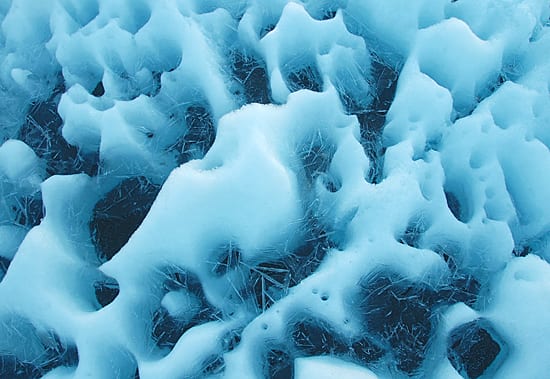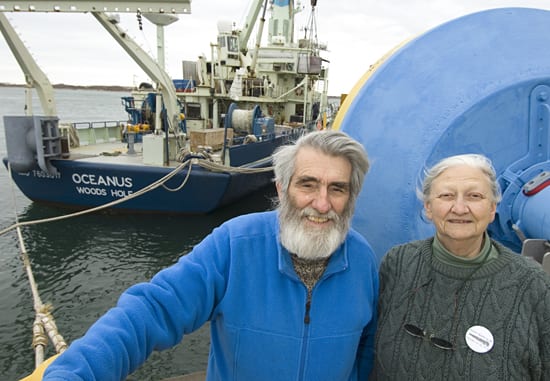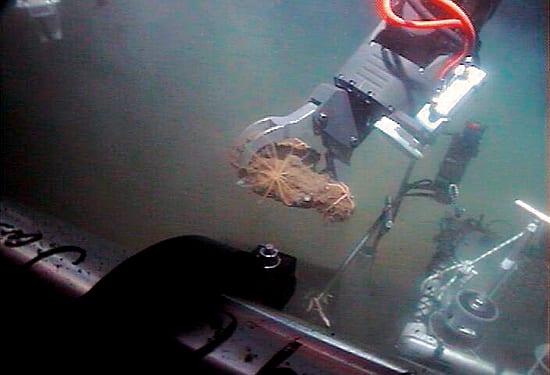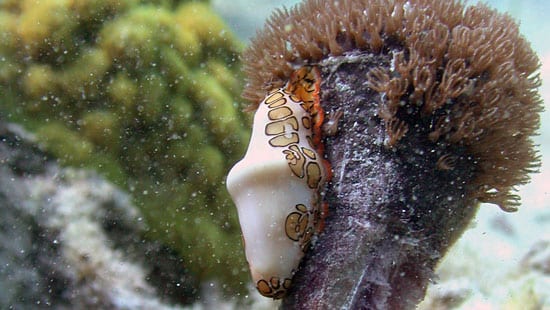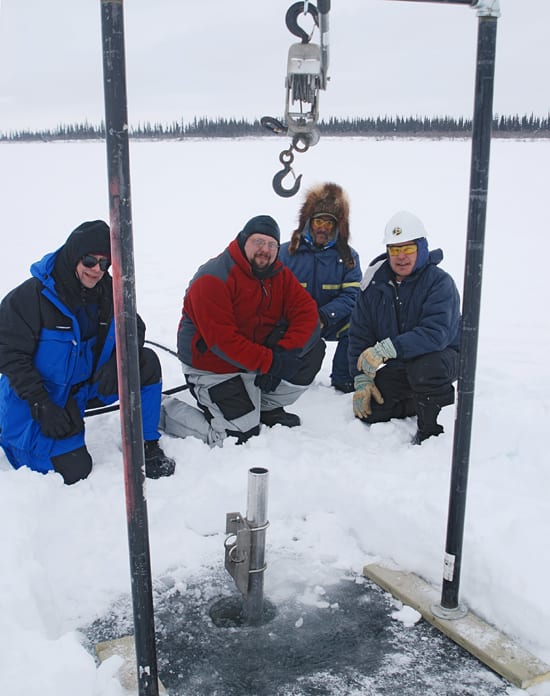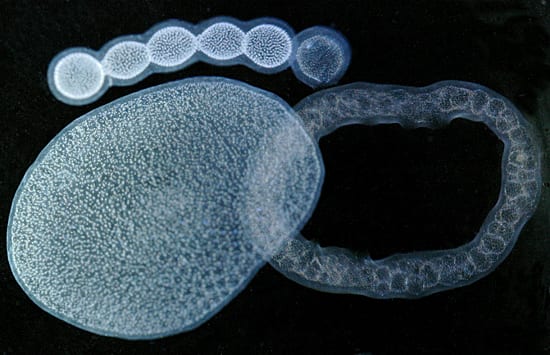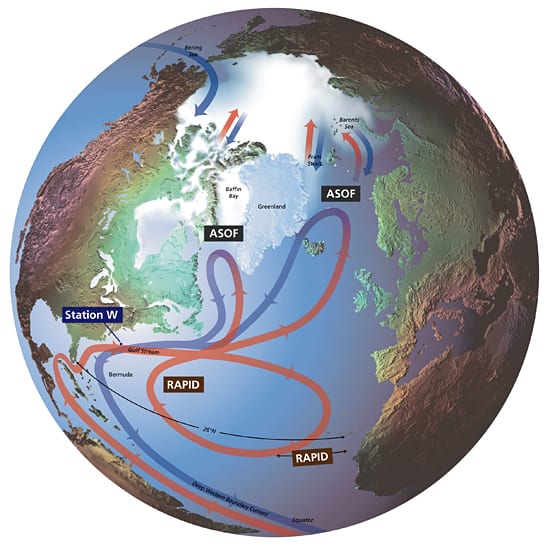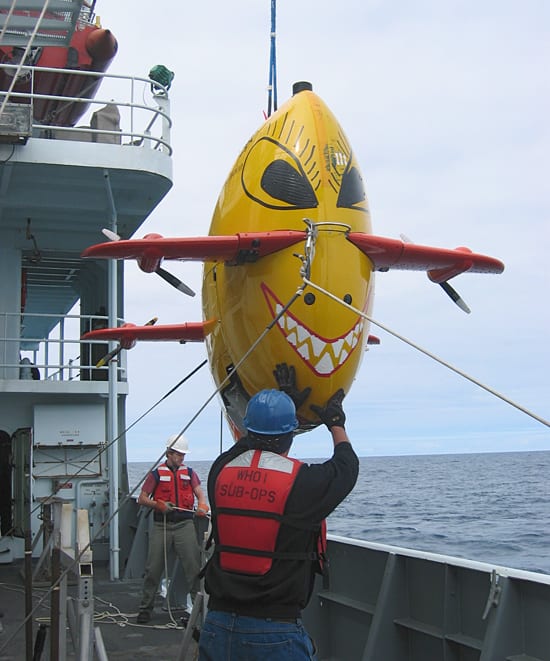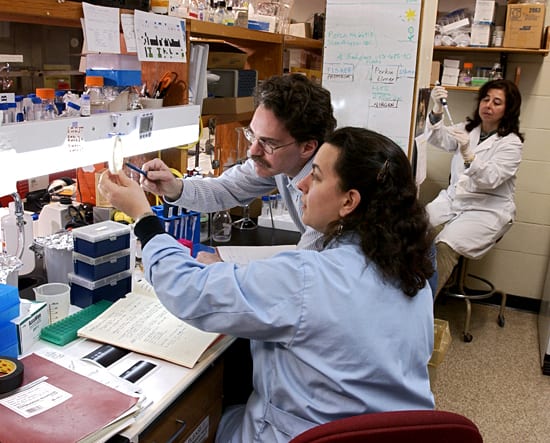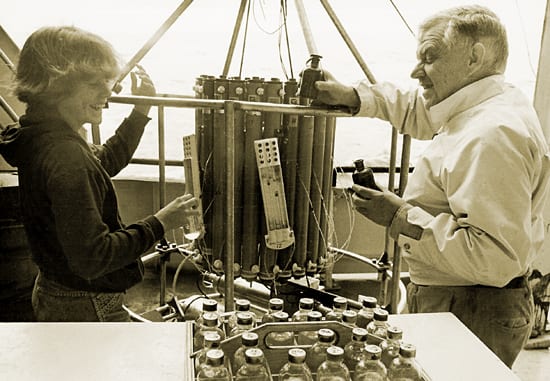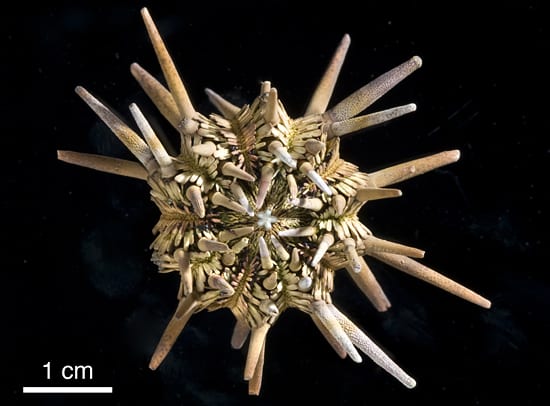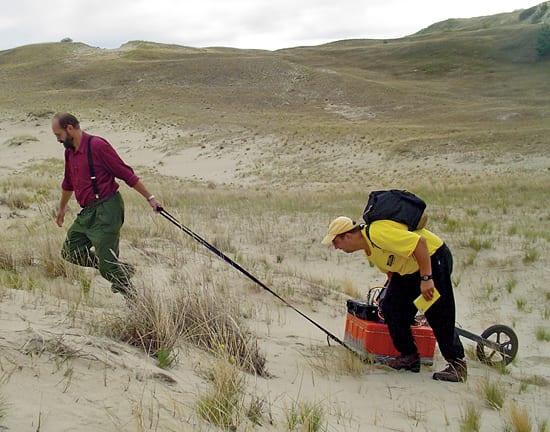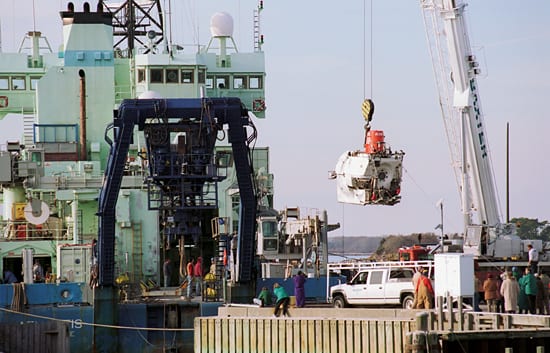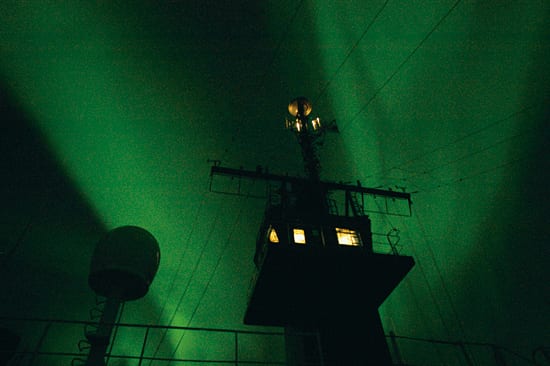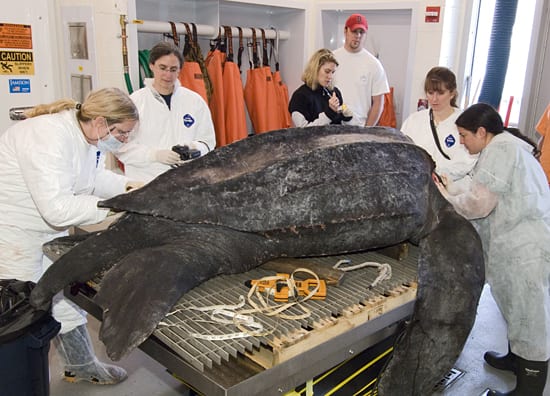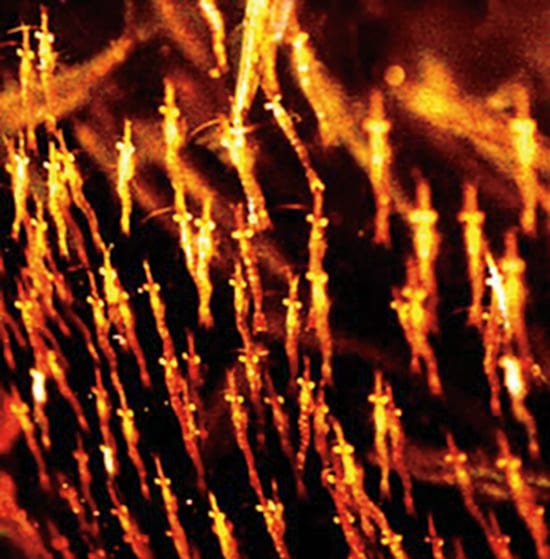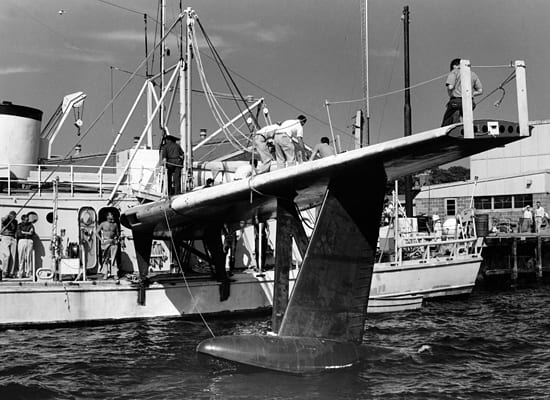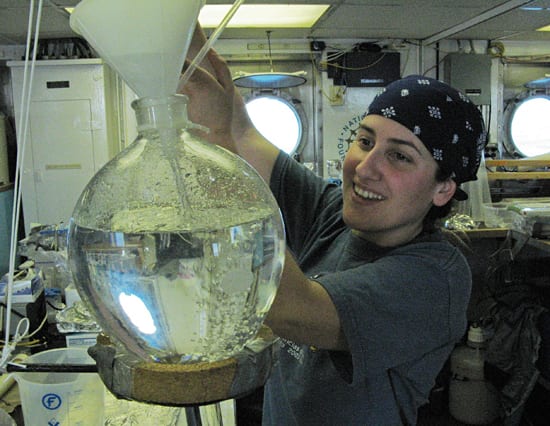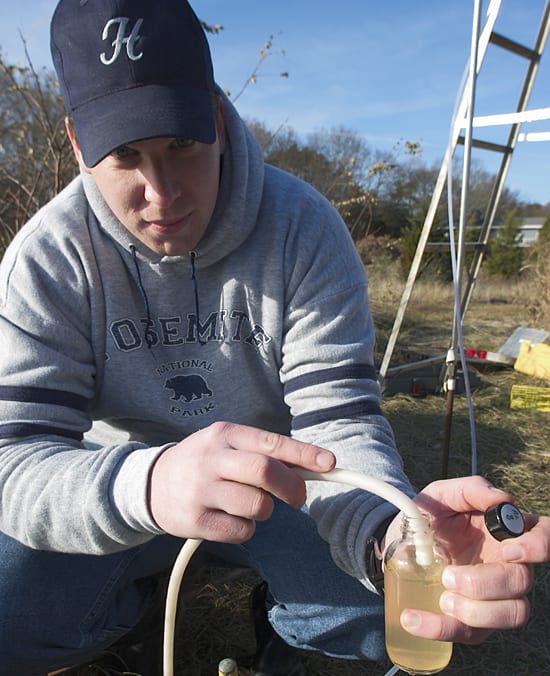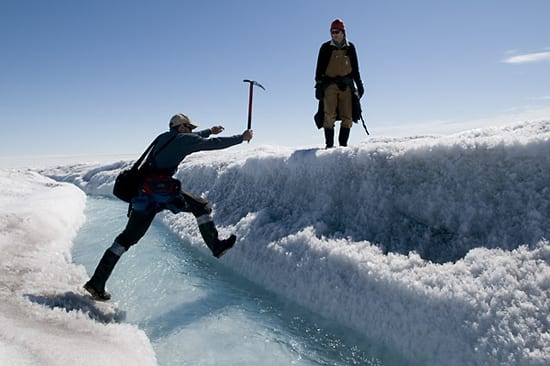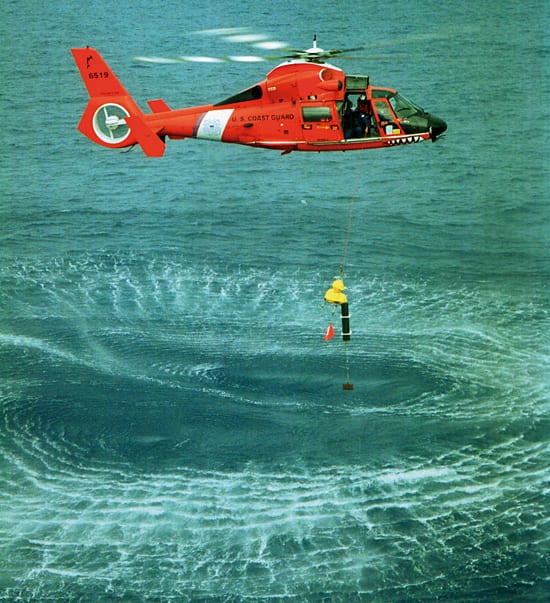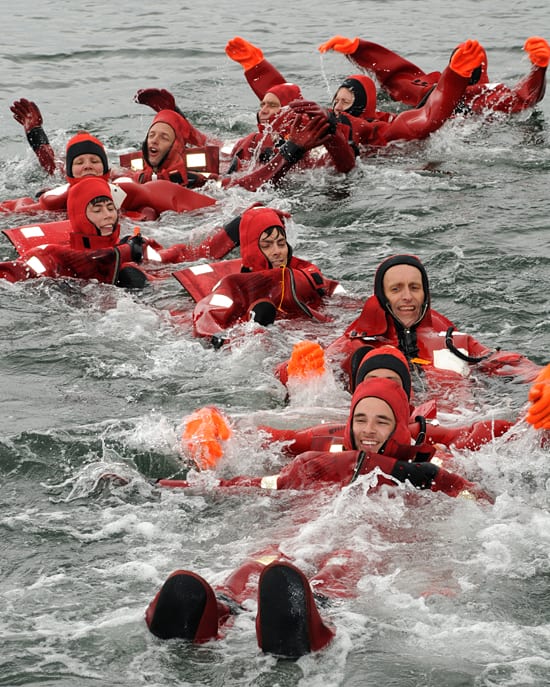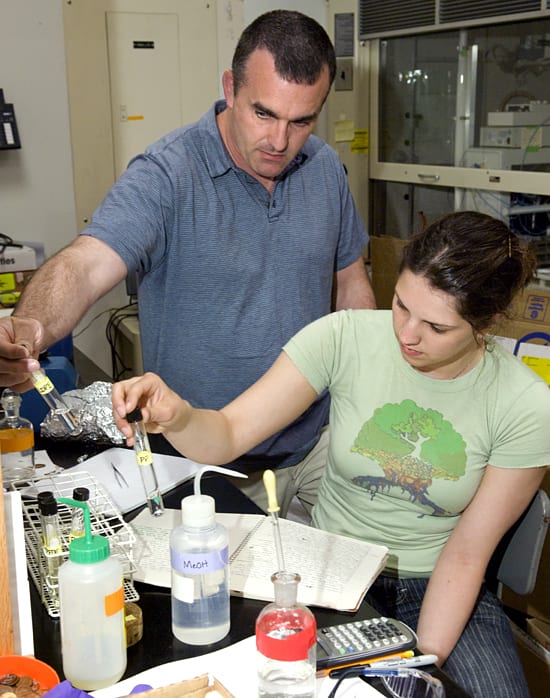Multimedia Items
Attack of the cryoconites
Greenland’s ice sheet is pockmarked with cryoconites, or holes filled with melted water. They form when the Sun melts darker dust and silt on the ice sheet, creating round or irregular…
Read MoreTogether in life and in science
Science and a full life go hand-in-hand for Rudolf Scheltema and Amélie Scheltema, researchers in the WHOI Biology Department who together have devoted over a century to understanding the invertebrate…
Read MoreArmed and Ready
On its first mission in 2002, the newest Jason vehicle—and its sophisticated manipulator arm, shown here—operated for nearly 300 hours without a failure. The ROV’s two manipulators can maneuver payloads…
Read MoreCorals vs. snails on a tropical reef
Ice-Road Corers
WHOI researchers Daniel Montlucon (left), Liviu Giosan (second from left) and two Inuit guides take a break from extracting sediment cores from a frozen Arctic lake. The research team, led…
Read MoreDrifting blobs in DNA database
Looking like bubbles or smoke rings, these half-inch chains, loops, and spheres are actually common planktonic animals called colonial radiolarians. Each soft shape is hundreds of single-celled animals embedded in…
Read MoreSeas in Motion
Colored arrows show two of the major current systems flowing through the North Atlantic, with red representing the warm surface waters of the Gulf Stream, North Atlantic Current, and associated…
Read MoreService with a Smile
WHOI’s newest autonomous underwater vehicle, Sentry, is launched from the research vessel Thomas Thompson in August 2008 during the AUV’s first scientific expedition. The vehicle surveyed and helped pinpoint several…
Read MoreSequences
WHOI biologists Sibel Karchner (foreground) and Mark Hahn examine bacterial colonies used to clone fish genes that play a role in determining susceptibility to toxic chemicals. Research Assistant Diana Franks,…
Read MoreCTD-side chat
MIT/WHOI graduate student Melinda Hall—now a research specialist in the WHOI Department of Physical Oceanography—shares a laugh with the late Henry Stommel while collecting samples from a conductivity-temperature-depth (CTD) rosette.…
Read MorePenciling-in the future
Postdoctoral researcher Justin Ries, working with Anne Cohen and Dan McCorkle in the WHOI Geology and Geophysics Department, grew this tropical pencil urchin (Eucidaris tribuloides) and other marine shell-building animals…
Read MoreVacuuming on the Sea Floor
WHOI postdoctoral fellow Chip Breier is working to put a new deep-sea particle sampling device on the remotely operated vehicle Jason to collect samples in hard-to-access places. For example, the…
Read MoreDragging for Data
WHOI coastal geologist Ilya Buynevich, right, and Lithuanian colleague Albertas Bitinas use ground-penetrating radar (GPR) to map ancient surfaces beneath Baltic Sea dunes. They are looking for “paleosols”—old soils buried…
Read MoreTime for a well earned rest
The famed submersible Alvin is hoisted off of the research vessel Atlantis and on to the WHOI pier in December 2000 for its periodic top-to-bottom, inside-and-out maintenance. Since 1964, the…
Read MoreNight Lights
In the fall of 2003, the Arctic Edge science team returned to the Western Arctic Ocean to retrieve and redeploy an array of moorings placed in 2002 to observe one…
Read MoreA Rare Chance to Examine a Rare Turtle
A panoply of uncommon stories and specimens passes through Woods Hole Oceanographic Institution’s Computerized Scanning and Imaging Facility. In May 2007, a team of biologists and veterinarians used the facility…
Read MoreLittle Canaries
Small crustaceans called mysids, shown here swarming in the ocean, might serve as “canaries in the coal mine” indictating when marine environments are being exposed to chemicals that could affect…
Read MoreFlying Fish
The research vessel Crawford is tied up at the WHOI pier with the wing of a P5 Marlin (P5M) seaplane strapped to its side in 1960. “An attempt was made…
Read MoreFilter Feeding
WHOI postdoctoral fellow Mar Nieto-Cid adds seawater to a filtration system in the main laboratory of the research vessel Oceanus during a cruise in the North Atlantic in April 2008. …
Read MoreRemove the Water, Carry the Water
MIT/WHOI Joint Program student Dan Rogers collects groundwater from a coastal aquifer at Waquoit Bay National Estuarine Research Reserve. Dan’s research examines the role of microbes in consuming and transforming…
Read MoreHandy tool (or, Don’t try this at home)
An ice axe is an indispensable tool for navigating on ice. Explorers use them to probe the snow ahead to see how deep it is, to stop themselves when sliding…
Read MoreDrop Me a (Phone) Line
A helicopter from the U.S. Coast Guard cutter Polar Star deploys one of five ocean-bottom hydrophones to record sound waves generated by any earthquakes or eruptions near Vailulu’u. After a…
Read MorePulling Together
WHOI staff link up and swim together as part of their small boat safety training course in spring 2008. Scientific and technical staff who wish to pilot the Institution’s small…
Read MoreLearning by Doing
Ellen Murphy, a high school student from Minnesota, and Chris Reddy, WHOI marine chemist, examine samples of plastic in Reddy’s laboratory in May 2008. Murphy, Reddy, and other lab technicians…
Read More
